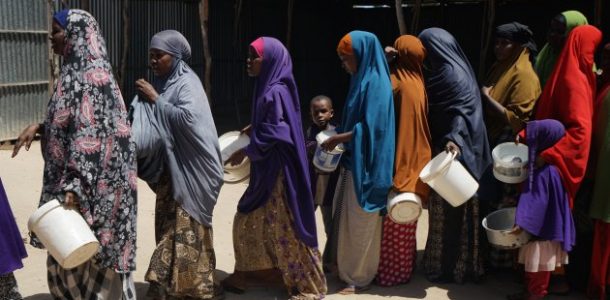Blog

How to Actually Help Sufferers of the Famine in Somalia
/ April 11, 2017
Sarah Lansdown Associate Editor, HuffPost Australia
Right now, 6.2 million Somalis are facing a crippling famine. It’s the third famine the region has witnessed in 25 years. Drought victims told the UN Migration Agency that people are calling the 2017 drought ‘Odi Kawayn,’ meaning ‘something bigger than the elders,’ since none of the Somali elders have experienced anything on this scale in their lifetime.
The statistics are overwhelming:
– 6.2 million Somalis need urgent humanitarian aid, approximately half of the country’s population.
– 950,000 children under the age of five will be acutely malnourished this year.
– 185,000 of these children are at risk of death without immediate medical treatment.
(Source: United Nations News Centre)
So far, the response has been lacking funds and coordination, with some aid agencies fearing the world is repeating the mistakes from the 2011 famine in Somalia. It’s hard to not want to jump out of your seat and want to do something real to help, no matter how far away you are from the Horn of Africa.
Ben Stiller kicked off an awareness campaign via Twitter on March 15th where he appealed to Turkish Airlines to donate a plane to deliver food and water to starving Somalis. Other people tweeted and posted their own videos with the hashtag #TurkishAirlinesHelpSomalia.
If you have 2 minutes and 20 seconds check this out. #TurkishAirlinesHelpSomalia pic.twitter.com/r0u3xh5spG
— Ben Stiller (@RedHourBen) 15 March 2017
The video, while well-meaning, got us thinking: would sending aid on a commercial airline actually work?
Jess Lees is the Disaster Response Manager for the Australian Red Cross. She’s currently in Nairobi, Kenya and is involved in managing the humanitarian response to the different crises in South Sudan, Somalia, Kenya and Ethiopia.
“It’s a good question,” Lees told The Huffington Post Australia.
“It’s amazing that someone of that profile is able to get behind this and it does help to bring attention to something that is not really in the media.
“However, Turkish Airlines sending a plane full of food without someone on the ground to distribute it is not really helpful.”
Lees says that established humanitarian organisations are best placed to distribute aid where it’s most needed. If a plane-load of food and water was to land in Somalia, who would receive it at customs?
“It does risk getting in to the hands of people who it’s not intended for and there can be some ramifications if it cannot be properly managed.”
Unsolicited donations can have unintended negative consequences. For example, in the aftermath of Tropical Cyclone Pam in Vanuatu, over 70 shipping containers of unsolicited bilateral donation (UBDs) made their way to the country. About 50 percent of food items were already spoiled by the time they were opened. Simply storing the donations racked up USD$1.5 million dollars in storage, handling and container rental fees. All of this cost way more than what the donations were actually worth.
Lees says that donations also need to be appropriate for the local context and not undermine what already exists in the local market.
“It’s something that is a problem in humanitarian responses around the world,” she says.
This is not to say that private companies, such as as an airline, can’t contribute to the emergency relief effort as that can lead to innovative solutions, Lees explains.
Turkish Airlines have since responded to the call out on Twitter, however no details have been released on the logistics of the operation.
We ❤Somalia. We got the call for this meaningful flight. @jeromejarre @redhourben @ELJuanpazurita #TurkishAirlinesHelpSomalia
— Turkish Airlines (@TurkishAirlines) 16 March 2017
So what is the best way for ordinary people to help other countries in crisis?
“The underlining message is that cash is best,” Lees advises.
“Cash is the most efficient way to give support to the NGOs on the ground.”
Choose an established humanitarian organisation to make your donation count, such as the Red Cross East Africa Food Crisis Appeal, World Vision’s East Africa Appeal or UNICEF.
*Article originally posted on The Huffington Post



